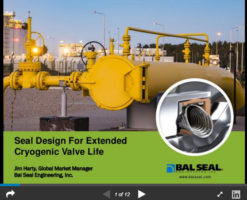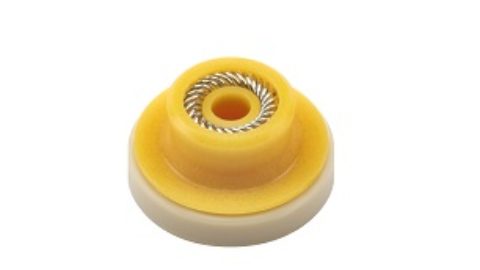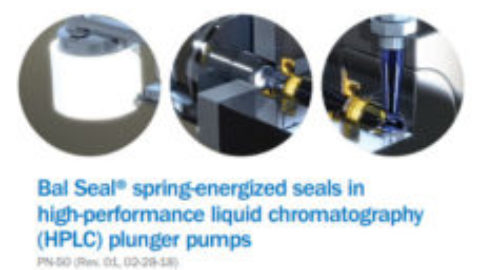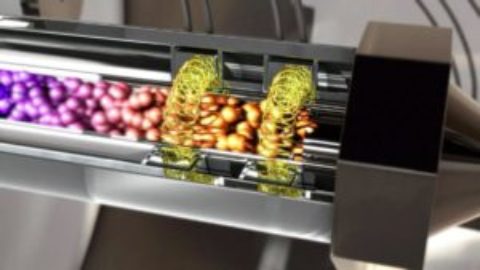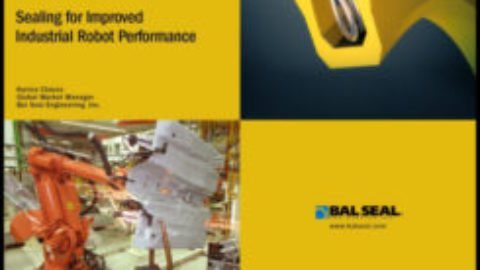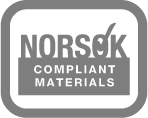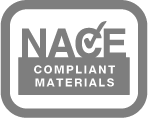Designing a valve that performs consistently in the cryogenic temperatures, high pressures, and thermal cycling of LNG is one tough job. But choosing the right cryogenic seal can make it a lot easier.
The presentation below examines the relationship between seal choice and LNG valve performance, and it addresses important design criteria, such as material selection, seal lip geometry, and energizer force.
It also suggests some ways to avoid common sealing mistakes that may be costing you time, money, and market share.
A critical link in LNG management, valves control flow of product in processing, liquefactions, loading, and transport. Therefore, they are held to high performance expectations. For example, they should be able to withstand long service intervals and perform consistently across a wide range of temperatures.
The process of converting gas to cryogen is costly. Additionally, valve failure at high pressures can present danger to people and equipment. As a result, valve failure can lead to lost profit and potential liability.
Challenges of Cryogenic Sealing
To understand why sealing plays such an important role in the longevity and performance of a cryogenic valve, it’s essential to understand the type of environment they’re utilized in.
Cryogenic valves must be able to withstand:
- Low temperatures below -100 degrees F/ -73 degrees C
- High pressures greater than 750 psi
- Thermal cycling- periodic variations in temperature during operation
All these factors make reliable, long-term valve operation a big engineering challenge.
As a result, cryogenic seals must be able to:
- Guard against leakage resulting from wear and tolerance variations in valve hardware
- Resist shrinking to prevent leak paths and loss of product and profit
Types of Cryogenic Seals
There are various types of cryogenic seals that can be used for LNG valves, including:
- Metallic seals
- Coated metal seals
- Graphite seals
- Elastomeric seals (O-rings)
- Chevron-type PTFE packing seals
- Spring-energized filled PTFE seals
Spring-energized filled PTFE seals are the ideal choice for cryogenic sealing. Although they may be initially more costly than other types of seals, they provide superior protection against shrinkage, have a longer service life, and perform well in static and dynamic applications.
The filled PTFE jacket material is low friction, chemically compatible, wear resistant, and temperature resistant. Additionally, the spring energizer is corrosion resistant and applies consistent sealing pressure over a large tolerance range which promotes even wear.
Consult with the Sealing Experts
Interested in custom engineering a spring-energized filled PTFE seal for your cryogenic valve? The seal experts at Bal Seal Engineering can help!
Click here to submit a Design Request Form. Our engineers will help custom design a seal that meets all your application requirements, produce high-quality prototypes, perform cryogenic seal testing, and scale up to full production.
